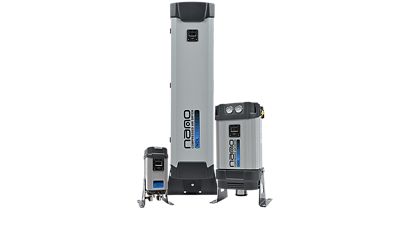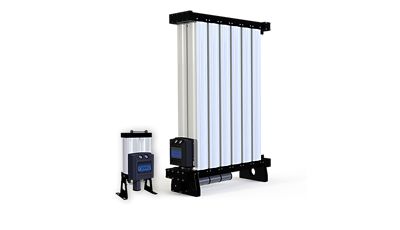In the oil and gas industry, instrument air is the invisible force behind safe, efficient operations. Whether it’s controlling valves, actuating pneumatic systems, or enabling emergency shutdowns, instrument air must be clean, dry, and reliable.
Moisture contamination, even in trace amounts, can lead to control failures, corrosion, downtime, and safety risks. That’s why specifying the right air treatment equipment is not optional, it’s essential.
At nano-purification solutions, we specialize in high-performance desiccant dryer systems engineered for the demands of upstream, midstream, and downstream oil and gas applications. Here’s what every engineer, plant operator, and EPC contractor should know about the role of dry instrument air, and how to protect critical systems in the field.
What Is Instrument Air and Why It Matters
Instrument air is a dedicated supply of compressed air used to operate and control pneumatic instruments and systems across oil and gas operations. Unlike general-purpose compressed air, instrument air supports control valves, actuators, analyzers, and emergency systems that must function with absolute precision.
Contaminants in this air, particularly moisture, can compromise system performance, freeze in control lines, corrode components, and create erratic signals that lead to system-wide inefficiencies or unplanned shutdowns.
The Cost of Moisture in Instrument Air Systems
The impact of moisture in instrument air is far-reaching. Common consequences include:
Corrosion of Control Valves and Actuators: Moisture causes internal degradation, resulting in sluggish or failed response during critical operations.
Freeze-Ups in Cold Conditions: Moist air condenses and freezes in control lines, blocking signal transmission and halting processes.
Inaccurate Readings from Instrumentation: Water vapor affects sensitive analyzers and sensors, reducing reliability in measurement and diagnostics.
Safety Risks: Pneumatic emergency shutdown systems (ESD) rely on dry, stable air to function instantly and without fail.
In environments where uptime is critical and safety is paramount, these risks are unacceptable. Dry air is not just a best practice, it’s a requirement.
How Desiccant Dryers Safeguard Instrument Air Systems in Extreme Conditions
Desiccant dryers work by adsorbing moisture from compressed air using desiccant media housed in “twin towers”. While one tower dries incoming air, the other regenerates. This cycle provides continuous, uninterrupted drying, ideal for mission-critical applications.
nano’s D1|2|3 range of modular desiccant dryers are designed specifically for these conditions, offering:
Consistent -40°F dew point performance (-94°F optional)
Low purge air loss for energy-efficient operation
Compact footprints ideal for offshore platforms or skid-mounted systems
Robust construction suited to corrosive, high-vibration, or remote environments
These systems are engineered to deliver reliable performance under the harshest conditions, onshore, offshore, or anywhere moisture puts operations at risk.
Where Dry Instrument Air Is Critical in Oil & Gas
Dry instrument air is a necessity in every segment of the oil and gas value chain:
Drilling Rigs – Prevent moisture-related freeze-ups in air-powered tools and controls
Offshore Platforms – Ensure performance in humid, saline environments where corrosion is accelerated
Compressor and Metering Stations – Provide consistent air quality in midstream operations
Refineries and LNG Plants – Protect pneumatic controls and analyzers essential to high-throughput processing
Pipeline and Tank Operations – Maintain safe and efficient control systems, especially during pigging and maintenance
In each of these environments, system failure due to moisture is not a minor inconvenience—it’s a serious operational and safety threat.
nano’s Commitment to Clean, Dry, Reliable Instrument Air
At nano-purification solutions, we understand the pressures of operating in the oil and gas industry. Our desiccant dryers are built for reliability, engineered for compliance, and supported by a global network of experts.
When you specify a nano desiccant dryer, you’re investing in:
Uptime: Continuous drying performance, even in demanding climates
Efficiency: Low purge air requirements reduce operational energy costs
Longevity: Durable components that reduce maintenance frequency and cost
Dry Air Isn’t a Luxury. It’s a Line of Defense.
In an industry where safety, reliability, and efficiency are non-negotiable, dry instrument air is your frontline defense against operational disruption. Desiccant dryers from nano-purification solutions provide the performance, protection, and compliance your systems require, wherever you operate.
Want to protect your systems from costly moisture damage?
Contact our experts today to find the right desiccant dryer solution for your needs.




